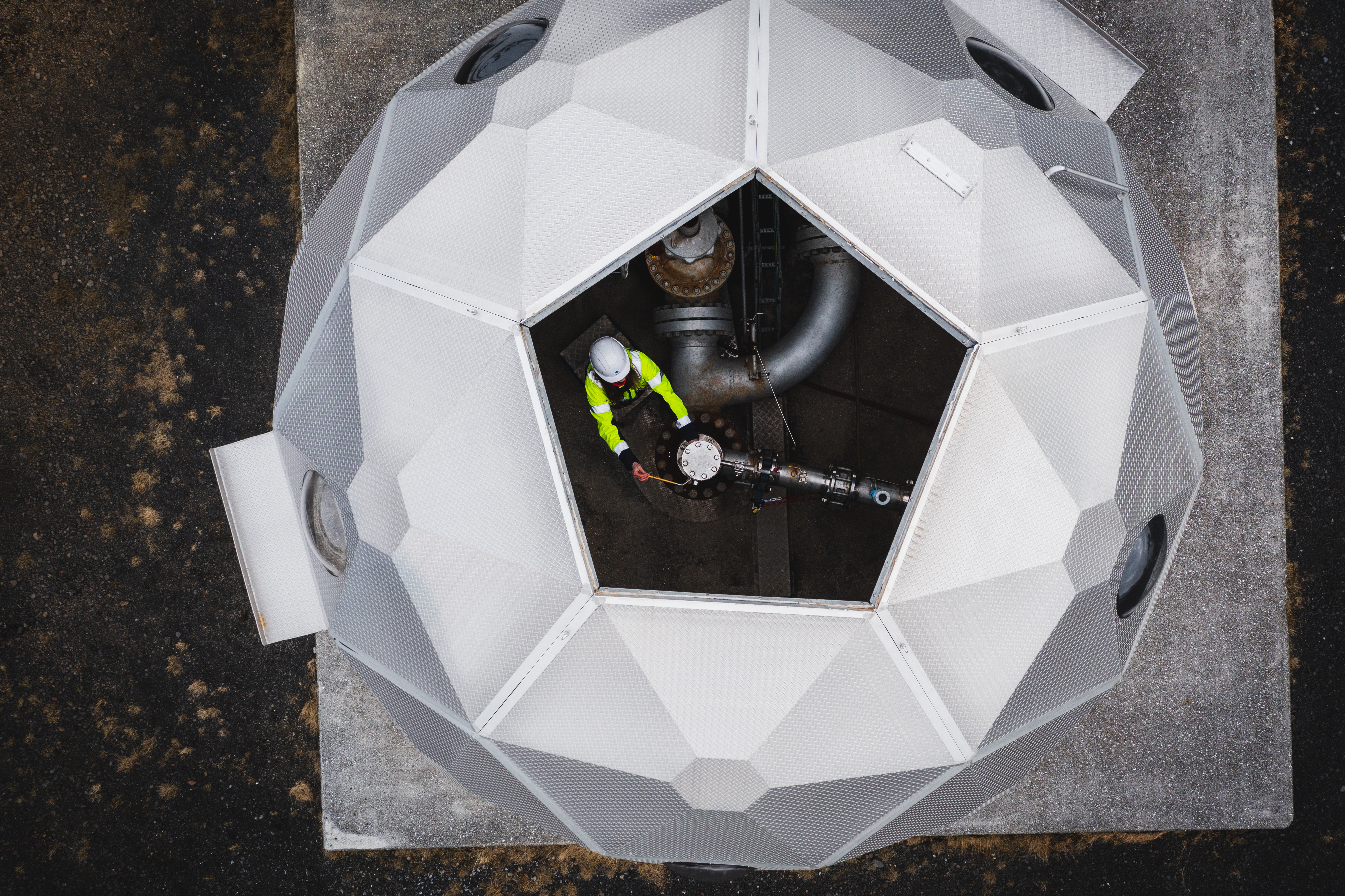
How Iceland's Carbfix is harnessing the power of turning CO2 into stone
March 18, 2024 - Slavin, Terry

The fact that Carbfix's geodesic dome is on the cover of the latest issue of National Geographic is only the latest indicator of how the Icelandic company's technology is exciting international interest. Canada’s prime minister, Justin Trudeau, Paris mayor Anne Hidalgo and a delegation of U.S. senators visited the site this summer, while 120 leading international scientists, policymakers, companies and scientists, who met in Iceland in September for Carbfix’s mineralisation summit, signed a statement, opens new tabagreeing that the subsurface mineralisation of CO2 “presents a very significant and largely untapped potential for safe and permanent storage of captured CO2”.
In the U.S., carbon capture and storage (CCS) has mainly been used to pump captured CO2 into depleted onshore oil and gas fields to help recover the last dregs of oil, known as enhanced oil recovery. And some of the CO2 from a commercial-scale direct air capture plant being built by Occidental Petroleum’s subsidiary 1PointFiv, opens new tab, already under construction in the Permian Basin in Texas, will be used for enhanced oil recovery.
“It’s important to distinguish between our method and traditional CCS,” says Jonsson. “We aren’t really storing the CO2. We are permanently sequestering it as a mineral.”
He adds: “For me, one of the most interesting things is how uninteresting this is: it’s just a couple of pipes going into the ground. It’s an operation that doesn’t have a big footprint in land use, and it means it can be located close to other industries.”
One of the pipes transporting CO2 into the geodesic dome is coming from a few hundred yards away, where Swiss startup Climeworks opened the world’s first DAC plant in 2021, capable of capturing 4,000 metric tons of CO2 a year. Nearby, construction is under way on its second plant, Mammoth, which will be nine times bigger.
--
